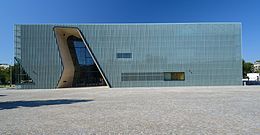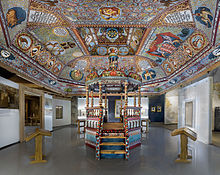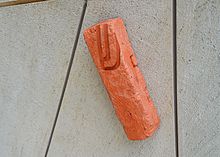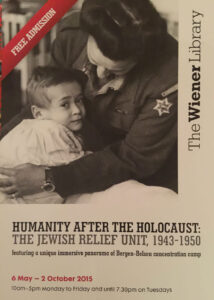I was privileged to attend the Seduva Jewish Cemetery Restoration and the two Holocaust Memorial ceremonies.
This is what Sergey Kanovich, who led the project, said at the first Holocaust Memorial ceremony:
Most probably it was a sunny and bright morning of August 25th 1941. That was the last morning that Seduva Jews gazed at the Lithuanian sky and seen the sun. Supervised by German nazi officers local neighbours of Seduva Jews became their executioners here and in other places.
Seventy years, even more needed in order to become a witness of little miracle of the victory of the humanity. We are here because we will never forget our sisters and brothers. We will never forget nor the way how they lived neither the way they were brutally murdered. It is the duty of all of us – of Jews and Lithuanians alike – to remember and respect the memory in order to avoid the catastrophe which Lithuanian Jews went through would never come back. To remember and respect – it is our common duty. No matter where litvaks would live – in Australia or South Africa, Israel or Switzerland, Belgium or Canada – we always remember where we came from, we remember our forefathers and we will never forget or allow to forget them. Murderers could not kill our memory. We are back, because our memory is stronger than their bullets. And memory will always prevail.
We wish to thank everyone who made this project a reality
We wish to extend our gratituted to every worker who makes these stones become a memory.
We are here in order to remember the life and death of those innocent who have been murdered. God bless their memory. Yhie zichram Baruch.Amen
Today is a second day of Jewish Holiday Shavuot. Since there are more than ten Jewish men we are obliged to say Kaddish for those who perished. I kindly ask Mr. Simas Levinas to start the prayer..
The photos before and at the cemetery:
Video:
The two Holocaust Memorials
Video:
Part of Ed Glasenberg’s Address
Video:
Kaddish – Sung By Rafailas Karpis

Lost_Shtetl Brochure
Šeduva
| Šeduva | ||
|---|---|---|
|
||
|
Location of Šeduva |
||
| Coordinates: 55°46′0″N 23°45′0″ECoordinates: 55°46′0″N 23°45′0″E | ||
| Country | ||
| Ethnographic region | Aukštaitija | |
| County | Šiauliai County | |
| Municipality | Radviliškis district municipality | |
| Eldership | Šeduva eldership | |
| Capital of | Šeduva eldership | |
| First mentioned | 1539 | |
| Granted city rights | 1654 | |
| Population (2005) | ||
| • Total | 3,270 | |
| Time zone | EET (UTC+2) | |
| • Summer (DST) | EEST (UTC+3) | |
Šeduva (![]() pronunciation (help·info)) is a city in the Radviliškis district municipality, Lithuania. It is located 18 km (11 mi) east of Radviliškis.
pronunciation (help·info)) is a city in the Radviliškis district municipality, Lithuania. It is located 18 km (11 mi) east of Radviliškis.
Shadova-Šeduva was an agricultural town dealing in cereals, flax and linseed, pigs and geese and horses, at the site of a royal estate and beside a road from Kaunas to Riga. The population from the fifteenth century was Catholic and Jewish. Until then, Lithuania had been the last pagan kingdom in Europe and allowed freedom of worship and toleration of Jews and other religions.[1] The first Catholic shrine of Šeduva, the Church of the Invention of the Holy Cross, was built and the parish founded between 1512 and 1529. The present brick church Cross was built in Šeduva in 1643 with a donation from Bishop Jerzy Tyszkiewicz of Vilnius. During the 18th century the bell tower was added to the structure, with further renovations and extensions in 1905. Baroque and renaissance architectural styles characterise both the exterior and interior of the church. It has a cruciform plan with an apse, low sacristy and five altars.
During the 15th century the region was redefined as the Voivodeship of Trakai and Vilnius. Later it became part of the Grand Duchy of Lithuania until the Union of Lublin in 1569 created the Polish-Lithuanian Commonwealth.
The Seduva coat of arms were granted on June 25, 1654 by John II Casimir Vasa, King of Poland and Grand Duke of Lithuania and at the same time the city was granted burger rights at the request of Maria Ludvika, Queen of Poland. She descended from the Princes of Gonzaga, from Mantua in Italy. The arms of the family showed a black eagle. The small breastshield shows the French fleur-de-lis, because the Gonzaga family was related to the French Royal family. The eagle was made white in reference to the white eagle of Poland.
1792 Stanislaw II August Poniatowski, the last royal proprietor of Šeduva, concluded an agreement with the town’s citizens, giving them rights to be excused from labour on the estate for a fee. In 1795, the year of a terrible fire in Seduva, Lithuania became part of Russia when Poland was partitioned. From 1798, Baron Theodore von Ropp did not acknowledge the rights of Seduva citizens and required of the citizens to perform labour in the town’s manor. The citizens petitioned for their rights to the Russian Senate. In 1812, the Senate passed the decision to recognise the former charters of Šeduva.
Between 1696 to1762, a Jesuit mission, connected with their college at Pasiause, was active in the town, operating a lower school with 96 pupils up until 1828. After an insurrection in 1863 (the January Uprising), all parish schools in Seduva were closed and replaced by public Russian language schools. In the same year a Russian Orthodox Church, designed by the architect Ustinas Golinevicius, was built and in 1866 a wooden Synagogue was added near the central market square.
The Molotov-Ribbentrop Pact between Nazi Germany and Communist Russia in August 1939 and the German-Soviet Boundary and Friendship Treaty a month later placed Lithuania under Soviet control. By June 1940 the Soviets had set up a pro-Soviet government and stationed many Red Army troops in Lithuania as part of the Mutual Assistance Pact between the countries. President Antanas Smetona was forced to leave as 15 Red Army divisions came in.
The pro-Soviet puppet government was controlled by Vladimir Dekanozov and Justas Paleckis, and Lithuania was made part of the Soviet Union. A Sovietisation programme began immediately. Land, banks and large businesses were nationalised. All religious, cultural, and political organizations were abolished except the Communist party. 17000 people were deported to Siberia, where many would perish.
The German army invaded Lithuania on 22 June 1941, taking Shadova – Šeduva a few days later as part of Operation Barbarossa. At first the Lithuanian population considered the Nazis to be liberators saving them from the Red Army. The new pro-German Government organized a Lithuanian militia which then became the Nazi’s manpower for genocide. Five hundred years of Jewish life in Shadova – Šeduva ended in just two days of slaughter. Shadova’s Jews attempted to flee east to Russia but were badly treated by Lithuanian nationalists and most returned to their homes. The German forces entered Shadova – Šeduva on 25 June 1941 and were received with flowers by many locals. By the beginning of July, Jews had to wear the yellow Star of David. Jews who had participated in the Soviet rule were immediately arrested and executed. Jews were taken to dismantle the remnants of the munitions factory in Linkaičiai, and were then accused of stealing and executed. Others were forced into labour gangs. They were set to work cleaning the streets and at the warehouses of the rail station. All the work was guarded by armed Lithuanian militi . Next all the Jews of Shadova – Šeduva had to gather in the market place with no more than a small package each, and to hand over the keys to their houses to the police. Under guard. they were escorted at night to the village of Pavartyčiai, five kilometres north-west of Shadova – Šeduva, where they were crowded into two unfinished Soviet barracks surrounded with barbed wire. The Jews were ordered to hand over all their valuables and cash. Some were shot in the next few days.
On 25 August 1941 the remaining Jews of Shadova – Šeduva were loaded on trucks and taken to Liaudiškiai, ten kilometres south-west of the town where the Rollcommando Hamann of Einsatzcommando 3 and Lithuanian collaborators of the 3rd company of the Tautinio Darbo Apsaugos Batalionas were waiting for them. Over the coming two days the entire Jewish community of Shadova was shot and buried in two pre-prepared mass graves. One site was located 400 meters north of the Shadova – Šeduva road and a second 900 meters north west of the same road, close to a path in the forest. The local killers of their Jewish neighbours from Shadova – Šeduva were Ramnauskes, Valavičius, Jonas Tomkus and Klemensas Rožėnas. The lists of mass graves in the book The Popular Massacres of Lithuania, Part II, include the following: Liaudiskiai forest about 10 km southwest of Seduva, one site 400 meters north of the Seduva road and a second site 900 meters northwest of the same road, close to a path in the forest.[2] The Jäger report concludes that Einsatzcommando 3 registered the murder in Šeduva on the 25 and 26 August 1941 of 230 Jews, 275 Jewesses and 159 Jewish children, a total of 664 people.

























































































































































































































































































































































